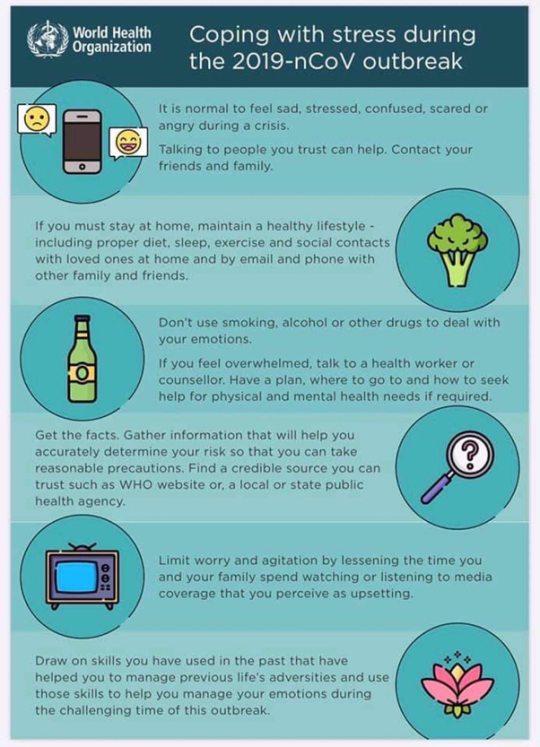As increasing numbers of people find themselves transitioning from office based jobs to working from home, perhaps rather suddenly, I thought it might be useful to outline some hints and tips about how we can use technology to help deal with the challenges.
Get your technology set up
You’re going to need equipment. Although many of us check emails from our phones on a regular basis (and from all sorts of places) they’re not great devices for having to write a long reply, or for doing other work. So ideally you will have a laptop or desktop computer, or maybe even a tablet computer. Perhaps work has provided you with access to this but if not you might have your own computer that you can use.
There’s nothing more frustrating that trying to join an online meeting only to discover just beforehand that you have to download some software. So make sure that you have downloaded all the software you need and can access your systems at work where that is necessary. Accept that this will take time and set aside some time to do it.
Establish work home boundaries
One of the great things about working at home is that you can work whenever you want. One of the worst things about working at home is that you can work whenever you want! If you love what you do it is easy to start work as soon as you get up and just keep on doing it! Some people much prefer having work and non-work as very separate parts of their life. For them, having the two parts of their life so connected could be uncomfortable. If this is you then think about how you are going to protect your non-work time by creating boundaries around work time.

Here are some ideas
- Use an alarm to signal the start and end times to your working day. And as a reminder to take lunch breaks
- Plan to go for a walk before you start work around the same time you might start your commute. Getting a bit of fresh air and some gentle exercise can help you transition into work mode. Plan to do the same thing after work to help you transition back into home mode.
- If you can, create a space in your home which is your work space, and try to keep it separate and away from the areas where you relax. That might mean that the kitchen table is the best place for you to work.
- If you don’t have a space in your home to do that and are going to have to use a laptop from the sofa then choose a place where you can put the laptop at the end of the day so that you don’t keep seeing it as a reminder of work. If that’s not possible then you can always throw a blanket over it or put it behind the sofa.
Email can be particularly bad at invading our non-work time. In our research we identified ways people can create barriers between work and non-work using email technology. These strategies help you to avoid the situation where you are distracted by a work message when looking at personal messages, or vice versa
- If you have more than one device, consider using only one device for work email and keeping your non-work email on another.
- If you only have one device, try using one app for work email and a different one for non-work email.
Avoid distractions as much as possible but accept that they are likely to impact your productivity
Sometimes it is hard to concentrate on work because you find it boring or difficult. Working at home can make it even harder to concentrate because home can be full of distractions Not only can you just go and deal with the washing, or decide to watch an episode of your favourite tv show before you start, but you might also have family members, housemates or pets sat around wanting to distract you. Here are some tips for avoiding distractions:
- Again this is where having a special place to work that is away from all the distracting things can help. It’s harder to stay away from the TV when it’s right in front of you.
- You can try installing software like rescuetime that helps you track your work hours – this can be useful whether you think you’re likely to work too much or too little. Our research has also shown that estimating how much time you have spent on social media, and then using a tool like this to check how much time you really spent, can reduce stress.
- There are lots of apps you can use to help you avoid using social media whilst working – if you’re having to use a home computer to do your work then you might want to install something to help you
- In our research we have shown that people process their emails most efficiently if they try to reduce the number of times they check each day. Only checking once a day can be difficult but try setting key times that you will go to your inbox and stay out of it the rest of the time.
- Consider making the most of having flexibility over when you work – can you get up early and do a few hours whilst your partner looks after the kids, and then swap round?
- If you’re trying to work at home whilst also doing childcare, be realistic about what you can achieve. Think about what activities will keep the children occupied for an hour or so (a movie or a few hours on their console won’t harm them) and use that time to do your most important work.
Relaxing after work
Work can be stressful at the best of times. It’s important to find ways to switch off. This might be especially important when given that many people will also be feeling anxious about the current pandemic. The WHO offers some useful advice about how to deal with this:

One of the activities that can help you to switch off from the stresses and strains of the day is to play videogames. We’re so used to reading in the media that videogames are bad for us that it has come as a surprise to some people to discover that our research has shown that they can be effective as a way to relax after work. It doesn’t seem to matter which kind of game you play as long as it’s one that you like. Many games contain a social element which might provide an additional benefit as you can use them as a way to connect with friends or family by playing over the internet.

